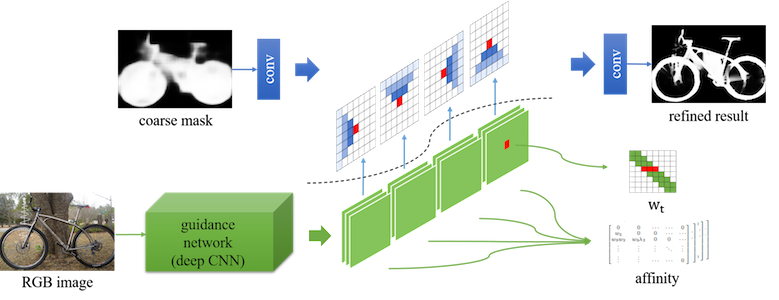Learning Affinity via Spatial Propagation Networks

In this paper, we propose spatial propagation networks for learning the affinity matrix for vision tasks. We show that by constructing a row/column linear propagation model, the spatially varying transformation matrix exactly constitutes an affinity matrix that models dense, global pairwise relationships of an image. Specifically, we develop a three-way connection for the linear propagation model, which (a) formulates a sparse transformation matrix, where all elements can be outputs from a deep CNN, but (b) results in a dense affinity matrix that effectively models any task-specific pairwise similarity matrix. Instead of designing the similarity kernels according to image features of two points, we can directly output all the similarities in a purely data-driven manner. The spatial propagation network is a generic framework that can be applied to many affinity-related tasks, such as image matting, segmentation and colorization, to name a few. Essentially, the model can learn semantically aware affinity values for high-level vision tasks due to the powerful learning capability of deep CNNs. We validate the framework on the task of refinement of image segmentation boundaries. Experiments on the HELEN face parsing and PASCAL VOC-2012 semantic segmentation tasks show that the spatial propagation network provides a general, effective and efficient solution for generating high-quality segmentation results.
